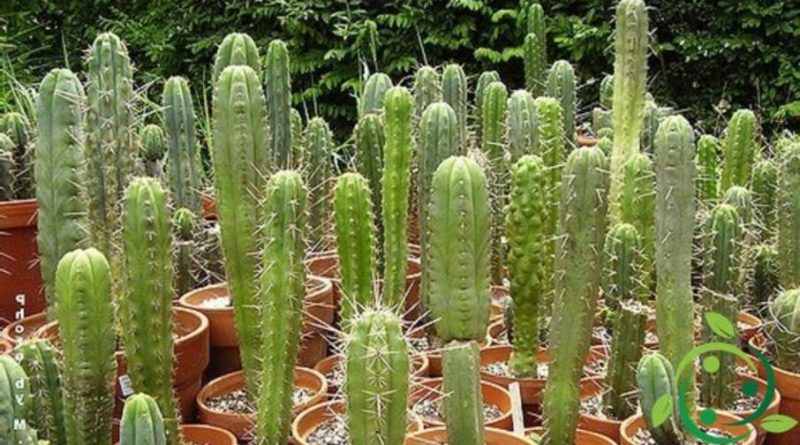How to grow Trichocereus
How to grow Trichocereus
The Trichocereus are a genus of plants belonging to the Cactaceae family and originating in South America, with greater diffusion in Ecuador, Peru, Bolivia, Chile and Argentina.
These plants have a trunk covered with a large number of bristles, with columnar growth, although there are some differences between the different species.
The Trichocereus have large funnel-shaped flowers, mostly red or white species, which open at night.
Among the various species that make up this genus we recall:
– Trichocereus bridgesi;
– Trichocereus camarguensis;
– Trichocereus candicans;
– Trichocereus chilensis;
– Trichocereus deserticola;
– Trichocereus grandiflora;
– Trichocereus huascha;
– Trichocereus macrogonus;
– Trichocereus pachanoi;
– Trichocereus pasacana;
– Trichocereus spachianus;
– Trichocereus scopulicola;
– Trichocereus tarijensis;
– Trichocereus terscheckii.
In this card we will see how to cultivate the Trichocereus considering that the flowers of the Trichocereus open at night, popping up at the top of the stem. A sort of crown for those who are the kings of rock gardens. Funnel-shaped flowers that bloom during the hottest season of the year, but that show themselves in all their beauty, elegant and refined, only at night.
As for the actual cultivation, it is specified that the Trichocereus are very resistant and adapt to the most varied climatic conditions.
If the plant is cultivated in pots, it is necessary to immediately put a preventive measure which, periodically, it must be repotted, having the foresight to obtain resistant and impenetrable gloves with thorns.
The era in which to repot is also suggested by the plant. in fact when the pot starts to be too small you will notice an excessive slowing in growth and the roots that often form a whole with the ground.
Spring is the best time to complete this operation.
The choice of the pot should be made using a not very deep one, as the roots of these plants do not go in depth.
The most suitable soil must be constituted, possibly, by a well-drained substratum and with lower layers composed of sand and perlite. If cultivated in the open ground it is necessary to choose an area with these characteristics (or by adding a similar substrate) possibly in areas with the presence of stones that give a particular characteristic to the rock gardens formed by these plants.
However, the ideal substrate is a mixture of peat, sand and clay.
In reference to temperature, if the Trichocereus are to be grown in the open ground, there are no particular problems: they are plants that tolerate high summer temperatures well, as well as cold winters with minimum temperatures close to 4 ° C.
If the plants are grown in pots instead, it is advisable to keep the room temperature between 15 and 25 ° C. In winter they can be moved outdoors on balconies and terraces.
Furthermore, it is fundamental that these species go through a phase of winter rest at low temperatures.
The choice of exposure is good in full sun. Also behind a large window, the important thing is that the sun’s rays from morning to sunset manage to perfectly illuminate the plant. If the plant does not flower and does not develop with a columnar habit, the cause is bad exposure to light, so it will only be necessary to move the plant to an area best illuminated by the sun’s rays.
Now let’s see the water regime.
The Trichocereus must be irrigated constantly, but in moderation. During the summer season these plants require more watering, each of which must be done without exaggerating. The soil must be dry before proceeding to the new irrigation, so as not to raise the humidity level too much.
Water supplies should be suspended in winter when the plant is grown outdoors or in rooms without heating. If, on the other hand, it is grown in a heated environment, it will only be necessary to spray it every 3 weeks or so.
As for the multiplication of Trichocereus this can happen in two ways:
– by seed – in this case the sowing must take place in the spring period (in the first days), taking care to lay the seeds in a specific compound for cacti. The container should be kept in a damp and shady environment until the seeds sprout.
– for sucker – it is used the suckers (part of the plant that looks like a branch and that develops directly on the trunk or at the base of the plant) produced by the mother plant. These must be dried before being planted in pots.
For fertilizing, remember that the ideal fertilizer for Trichocereus must be rich in potassium and low in nitrogen. Fertilization must take place on a monthly basis during the spring and throughout the summer (this will favor a beautiful flowering), while it must be suspended in autumn and winter.
On the other hand, no intervention is required for pruning.
Finally, it is interesting to know that the Trichocereus, especially the Peruvianus species, are able to absorb the electromagnetic waves produced by the accessories that modern technology has given us. Therefore, when grown at home, it can be a valuable aid in cleaning the air.
Furthermore the Trichocereus (especially the pachanoi species) contain alkaloid substances, that is with great pharmacological effects even when it comes to small doses; however, they do not represent any danger.

